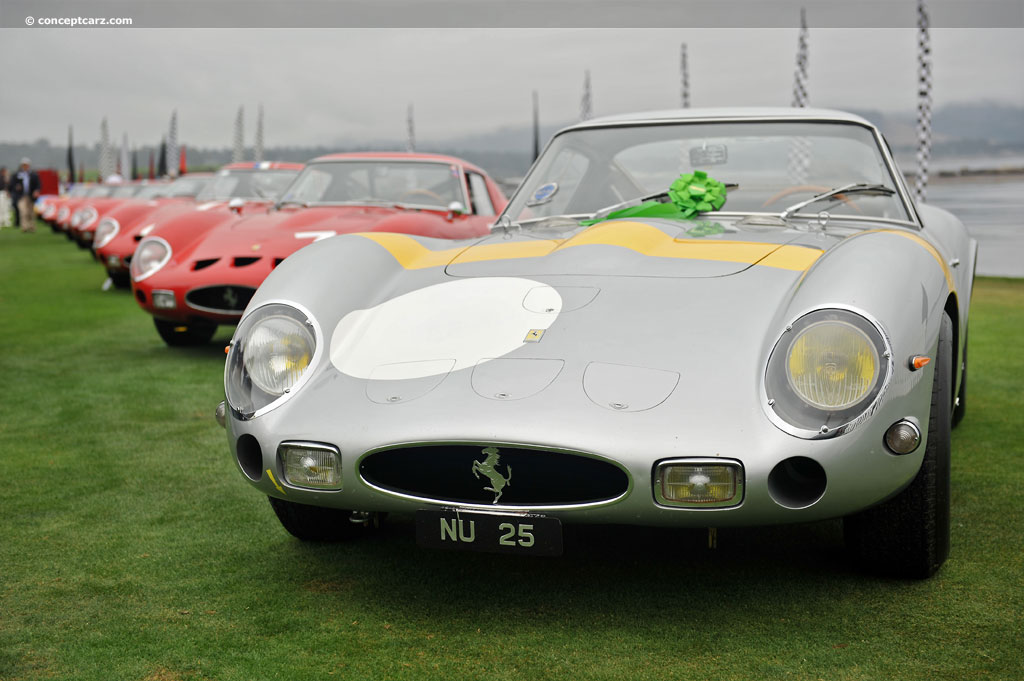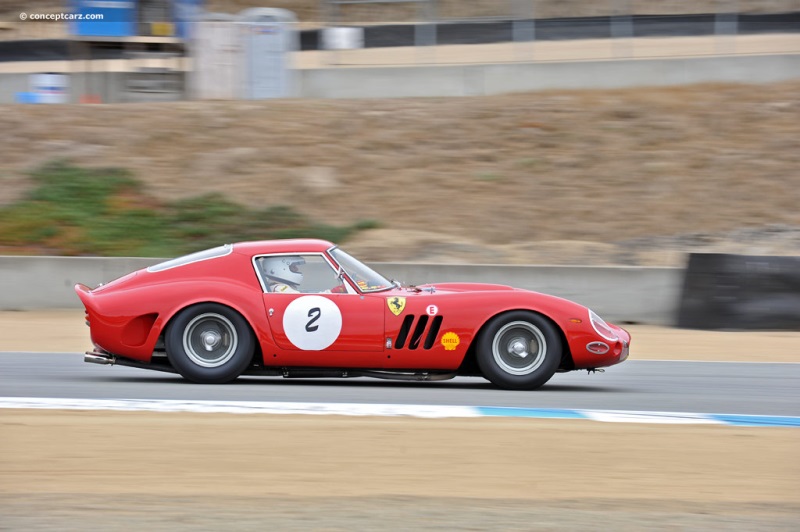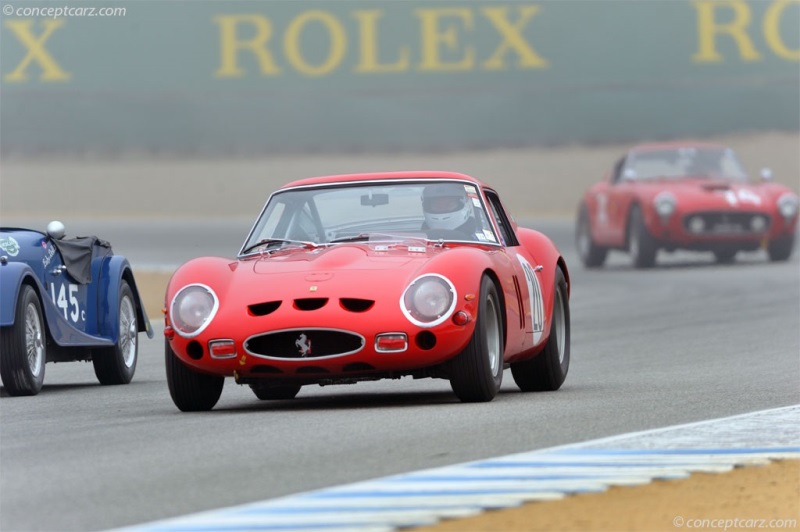1963 Ferrari 250 GTO Navigation
The Ferrari 250 GT 'Omologato' was the pinnacle front-engined evolution of the 250 Series of sports cars and grand tourers that began during the early 1950s. When it made its public debut at the annual pre-season Ferrari press conference in January 1962, it was the only front-engine model on display, with its monoposto and sports racing counterparts all having a mid-engine configuration. The Ferrari 250 GTO was both a street-useable car and World Championship racing winning machine. Developed to contest the 1962 3-liter class FIA GT World Championship series of classical endurance racing events, it would win the World titles in 1962 and 1963. 
Berlinetta
Chassis #: 4153GT
View info and historyProduction was exclusive with a total of 39 examples built. Thirty-three examples wore the 1962-1963 'Series I' bodywork and three with the 1964 'Series II' bodywork similar to the Ferrari 250 LM. Four of the 'Series I' cars were updated in 1964 to Series II configuration. An additional three '330 GTO' cars were built with a four-liter 330 engine and distinguished by a large hump on the bonnet. They are sometimes included in the overall production number, bringing the total to 39.The 250 Series and the Colombo short-block V12The 250 Europa that was introduced in 1953 at the 40th Annual Paris Auto Show was an entirely new design for Ferrari and it utilized a long 110.2-inch wheelbase platform with styling that was perfected suited for Grand Touring. The early examples wore bodies by Vignale along the lines of the 340 Mexico, while subsequent examples were clothed by Pinin Farina. 
Berlinetta
Chassis #: 4153GT
View info and historyLate in 1954, Maranello introduced a second series model named the Europa GT with the most significant change being a new 3.0-liter 'short block' V12 engine that developed 20 additional horsepower over the original Lampredi unit. This new powerplant would power Ferrari vehicles for the next decade. With constant development, this engine would continue to grow in power, and serve as the motivation for many of Ferrari's different vehicles designed for road and track. The sophistication of the engine was mirrored by the simplicity and durability of the tubular ladder frame and suspension, with the new engine allowing for an eight-inch reduction in wheelbase size, a revised rear frame design, and front coil springs rewarding the car with improved handling. The Pinin Farina body remained consistent with its predecessor's styling, with the front fender ahead of the door being shortened resulting in better proportions. The Europa name was soon dropped and the series was simply known as the 250 GT - a name derived from the displacement of a single cylinder - 250cc multiplied by 12 resulted in 3,000cc. Nearly all of the 250 series cars used the 3.0-liter Colombo V12 engine and its longevity is attributed to its durability, lightweight construction, tuneability, and output. Initially offering approximately 225 horsepower in competition guise, the output would increase over the years, reaching 300 horsepower with the Testa Rossa and 250 GTO. Most of the road cars rested on either a short wheelbase (SWB) size of 94.5 inches (2,400mm) or a long wheelbase (LWB) of 102.4 inches (2,600 MM). The Tour de France
Berlinetta
Chassis #: 4219GT
View info and historyThe tragedy at Le Mans in 1955 led to new FIA regulations which would birth a new Gran Turismo class for the 1956 season. Ferrari's new 250 Series was poised and ready to capitalize on the changes. Although meant for the streets and public roads, Ferrari knew that he had the car for this new class. Pinin Farina designed a competition body and Carrozzeria Scaglietti was commissioned to build them. The Ferrari 250 GT Berlinetta was an incredibly successful race car, and its victory in the grueling 3,600-mile Tour de France Automobile led to these long-distance racecars internally referred to as the 'Tour de France.' The 'Tour de France' would be produced up until 1959 in a series of four different body styles.During its racing career, the 250 GT would claim victory at Tour de France eight years in a row. The 250 GT Berlinetta 'Interim' and SWB
Berlinetta
Chassis #: 4293 GT
View info and historyAs the 1950s were coming to a close, seven 250 GTs were built as 'Interim' models to asses Pinin Farina design tightly draped over an all-new short wheelbase chassis. With a convincing seventh-place finish at Le Mans in 1959 and another victory at the Tour de France Automobile, production of the 250 GT SWB (short wheelbase) commenced.The new curvaceous bodywork had shorter overhands, a much rounder trail, and headlights mounted on the edge of the fender and were more pronounced than the recessed headlights previously used. The chassis continued to be a straightforward oval tube frame with additional reinforcements around the rear and engine. The front received double wishbone and coil springs while a live axle was used at the back along with semi-elliptic leaf springs. The tried and trusted drum brakes were once again fitted.Giotto Bizzarrini, Carlo Chiti, and Mauro Forghieri were tasked with the development of the 250 GT SWB Berlinetta. This same team would later produce the 250 GTO. Anchored by a lighter-weight aluminum alloy body and highly-tuned Colombo V12 engines, the Ferrari 250 GT SWB would earn an exceptional reputation on the track earning victories in the Tour de France from 1960 to 1962, as well as, victories in the RAC Tourist Trophy classic races at Goodwood between 1960 and 1961. 
Berlinetta
Chassis #: 4757GT
View info and historyStandard road versions of the SWB had a steel body with a 90 x 54 mm frame and detuned Colombo V12, while the competizione versions featured an alloy body and a smaller 80 x 45 mm frame. These were the first Ferraris equipped with Dunlop disc brakes.World Sportscar Championship : 1953 to 1961The World Sportscar Championship was - as the name suggests - a series of races for sports cars and was overseen by the FIA and in operation from 1953 to 1992. Although the official name of the series changed throughout the years, it has generally been known as the World Sportscar Championship since its inception in 1953. Along with Formula One, it was initially one of the two major world championships in circuit motor racing. In 2012, the name was changed to the World Endurance Championship.
Berlinetta
Chassis #: 4293 GT
View info and historyCircuits such as the Mille Miglia Targa Florio, and Carrera Panamericana were once part of the calendar, alongside the 12 Hours of Sebring, the Tourist Trophy, Nurburgring 1000 km, and the 24 Hours of Le Mans. The GT class was for production cars and the other class was for Sports Cars, with further segregation based on engine displacement. Ferrari was the most dominant competitor throughout the decade. Maserati provided fierce competition and won many races, but never managed to clinch the World title. The Mercedes-Benz team may have dislodged Ferrari from its perch atop of the Championship had it not been for their withdrawal from racing after 1955 due to their crash at Le Mans. Jaguar was another series contender with their C- and D-Types, but the works team did not enter any events other than Le Mans. The Aston Martin team was small but mighty, and although they struggled to find success, they did manage to win the championship in 1959. World Sportscar Championship : 1962 to 1965
Berlinetta
Chassis #: 4153GT
View info and historyFor the 1962 season, the World Sportscar Championship title was discontinued and was replaced by the International Championship for GT Manufacturers. The world championship was run for GT cars (rather than sports cars), and the calendar grew to include smaller races. The season now included approximately fifteen races with hillclimbs, sprints, and smaller races added to the agenda. Cars were now grouped into classes of 'less than one liter,' 'less than two liters,' and 'over two liters.' Races such as Le Mans still counted towards the prototype championship, but since the points valuation wasn't very tabular, the FIA returned to the original form of the championship with about 6 to 10 races.A prototype category was added for 1963, and for 1965 the engine classes were 'cars under 1300 cc (Class 1),' 'under 2000cc (Class II),' and 'over 2000cc (Class III).' Class III did not have any displacement limitations. The Ferrari SEFAC Hot Rods / Comp 61s
Berlinetta
Chassis #: 4219GT
View info and historyFerrari built a handful of special cars to contest the 1961's International GT Championship for Constructors. Officially called the Comp./61s and popularly known as 'SEFAC hot rods' (Societa Esercizio Fabbriche Automoili e Corse), they were lighter and more powerful than their predecessors. They received smaller diameter tubing with supplementary bracing to increase rigidity, lightweight body, aluminum bumpers, Plexiglas side windows, raked windscreen, 168B/61 engine fitted with 250 TR cylinder heads using revised cam timing, larger intake ports, six Weber 46 DCF/3 carburetors, and competition exhaust. The Tipo 539/61 chassis was similar to the regular SWB unit but featured revised rear suspension pickup points. With nearly 300 horsepower at 7,000 RPM, and depending on the gear and axle ratios, could achieve speeds of 160 mph at Le Mans. SEFAC hot rods were the most advanced Ferrari competition coupes before the legendary Ferrari 250 GTO. 1961 Ferrari 250 GT Le Mans Berlinetta Sperimentale
Berlinetta
Chassis #: 4757GT
View info and historyChassis number 2429GT was the first 250 GT SWB Sperimentale to receive a modified Comp/61 engine. The second example (2643GT) was powered by a competition-spec 3-liter V12 with dry-sump lubrication and six carburetors. This car would later be known as the 250 GTO prototype, as it shared many similarities to the legendary 250 GTO. It was built in 1961 and was a styling and engineering exercise for Ferrari's racing interests. It used a modified SWB chassis with a Type 168/61 Testarossa spec dry-sump engine. It was a factory entry at Le Mans in June of 1961 with Fernand Tavano and Giancarlo Baghetti driving. Due to instability at speed on the Mulsanne, a rear spoiler and front winglets were added to the car. These were somewhat hastily added to the car between practice and the race. It retired with engine trouble. The car's greatest accomplishment came in February 1962, at Daytona, where, with Stirling Moss at the wheel, it placed first in class in a three-hour race.The Ferrari 250 GT Comp/62Ferrari's GT car for the 1962 racing season was the Comp/62 (as it was known in official paperwork) but is generally referred to as the 250 GTO, with the 'O' being short for ''Omologato' - Italian for homologation. The Comp/62 used the 250 TR engine with three additional carburetors (totaling six) and dry sump lubrication, and its body shape is believed to be the work of Gestione Sportiva's (the factory competition department) Giotto Bizzarrini and Scaglietti. The first eighteen cars had a small lip bolted on the 'Kamm' shaped tail while subsequent cars had the lip built directly into the body. The overall design was pure, minimalistic, and beautiful, devoid of superfluous detail to spoil the rare elegance and efficiency of its design. 
Berlinetta
Chassis #: 4561SA
View info and historyDue to the styling updates, the 250 TR engine, and the dramatic departure from the road-going variant, many argued that the Comp/62 was a new car and thus, could not qualify for homologation purposes. Since it was heavily derived from the earlier 250 GT Berlinetta SWB, homologation status was granted. Il CommendatoreEnzo Ferrari was known as 'Il Commendatore' and his management style is often compared to that of totalitarianism, as he tightly held all authority and control. Driven by competition success, his efforts were forged from years as a racing driver and as a team manager. He won his first Grand Prix in 1923 in Ravenna on the Savio Circuit, followed by three victories a year later (at Ravenna, Polesine and the Coppa Acerbo in Pescara.) The death of Ugo Sivocci in 1923 and Antonio Ascari in 1925 made him question his future as a driver, and the birth of his son Alfredo (Dino) in 1932 convinced him to retire and focus instead on the management and development of the factory Alfa race cars. He retired after participating in 41 Grand Prix with a record of 11 victories. With several of the greatest drivers of the era, including Giuseppe Campari and Tazio Nuvolari, the 'Scuderia Ferrari' racing division of Alfa Romeo was very successful. Scuderia Ferrari managed Alfa's racing program until 1937, thereafter by Alfa Corse, with Ferrari remaining as Sporting Director. Ferrari left in 1939 following a disagreement with Alfa's managing director Ugo Gobbato, and founded Auto-Avio Costruzioni, a company supplying parts to other racing teams. When World War II came to a close, Enzo decided to start making cars bearing his name and founded Ferrari S.p.A. in 1947. Among its many early racing achievements was a victory in 1949 at the 24 Horus of Le Mans, with a Ferrari 166 MM driven by Luigi Chinetti and (Baron Selsdon of Scotland) Peter Mitchell-Thomson. Ferrari won his first world championship Grand Prix with José Froilán González at Silverstone in 1951. Il Commendatore's relentless pursuit of victory resulted in a very prosperous period for the marque during the 1950s and 1960s, including six consecutive victories at Le Mans (1960 to 1965), and three World Drivers' Championships (Juan Manuel Fangio (1956), Mike Hawthorn (1958), and Phil Hill (1961)).Enzo Ferrari's strong personality and controversial management style would lead to Ford's creation of the GT40 (following a failed business arrangement between Enzo and Henry Ford II) which would claim victory at Le Mans in 1966 through 1969. When Ferruccio Lamborghini, an Italian tractor manufacturer, told Enzo about problems he was having with his Ferrari automobile, Enzo challenged him to 'built a better car.' The result was the Lamborghini Miura, one of the most iconic cars in history, and the birth of a rivalry that would continue for decades. The Great Ferrari Walkout
The early 1960s brought numerous changes to the racing community and development followed at a feverous pace. For Ferrari, things became even more complicated with the 'Great Walkout' in 1961, when sales manager Girolamo Gardini, together with manager Romolo Tavoni, chief engineer Carlo Chiti, sports car development chief Giotto Bizzarrini and other key figures in the company left Ferrari to found the rival car manufacturer and racing team Automobili Turismo e Sport (ATS). The mutiny by Ferrari's best engineers is attributed to Enzo's aggressive management style, and percolated to the boiling point with his wife's (Laura Garello) involvement in the company. Gardini threatened Enzo with leaving the company if Laura wasn't removed from company affairs. Laura would remain but Gardini was fired. Five other key personnel sided with Gardini and left the company in October 1961. The walkout occurred during the development of a new 250-based model, and the project's future was in jeopardy due to the loss of many key executives and engineers. Tragedy
Another struggle the company was facing was its path that led to its championship involving numerous fatalities. The Scuderia had won the World Championship of Drivers and the International Cup for F1 Manufacturer's titles in 1961, but these triumphs were overshadowed by Wolfgang von Trips' tragic death at Monza, which had also claimed the lives of fifteen spectators. In 1957, Ferrari Grand Prix driver Eugenio Castellotti was killed at the Modena Autodromo circuit, and Fon de Portago perished a month later at the last Mille Miglia race (killing several spectators in the process). Luigi Musso was killed at the French Grand Prix in Reims in 1958, and Peter Collins at the Nurburgring a few weeks later. The loss of life and the loss of talent in the walkout were a 'one-two' blow for Ferrari, leaving them 'on the ropes' as they attempt to cope with the poor publicity that followed. Ferrari's small family of employees had the monumental responsibility of keeping Il Commendatore at the pinnacle of motorsport competition.
Thirty-three examples were built with 1962/63 bodywork. Four examples were later updated to Series II designs. GTO 64 Series II
What is commonly referred to as the 'GTO 64' or 'Series II' wore updated styling by Mauro Forghieri and Mike Parkes. They redesigned the 250 GTO's bodywork with many of the 250 LM's aerodynamic features in hopes of enhancing the GTO's competitiveness for the 1964 season. The 250 LM had a mid-engine, rear-wheel drive and was not approved by FIA to race in the GT class during the 1964 season. Minor modifications were made to the chassis, suspension, engine, gearbox and interior. 330 GTOsThree examples of the 330 GTO were built using the 250 GTO body paired with the 400 Superamerica 4.0-liter engine. Due to the larger engine, these cars received a larger bonnet bulge. Of the three cars, two examples were raced in period with a highlight being a second overall finish (and first in class) in the Nürburgring 1000 km.330 LMB (Le Mans Berlinetta) The 330 LMB used a modified 250 GT Lusso chassis and body and a 4.0-liter engine. Four examples were built in 1963, with the first example introduced in March alongside the mid-engined 250 P. Both were essentially developments of the 250 GTO with similarly styled front ends along with traditional Ferrari design cues. The 250 LMB was slightly longer than the 250 Lusso on which it was based, and had raised plates on the top of the rear fenders to help clear the rear tires. Among the accolades achieved was a fifth place finish at Le Mans in 1963 with drivers Jack Sears and Mike Salmon. The Legacy of the 250 GTOThe Ferrari 250 GTO was the end of an era for Ferrari's racing program as it was the conclusion of their 3-liter Colombo-design V12 Series in front-engine configuration. It kept the company at the top of the podium as they transitioned to new engineering personnel, and as they negotiated the new mid-engined style of cars. Their competition prowess and undeniable elegance have made them one of the most valuable cars in modern times, with recent sales reaching $70 million.
by Daniel Vaughan | Jan 2023
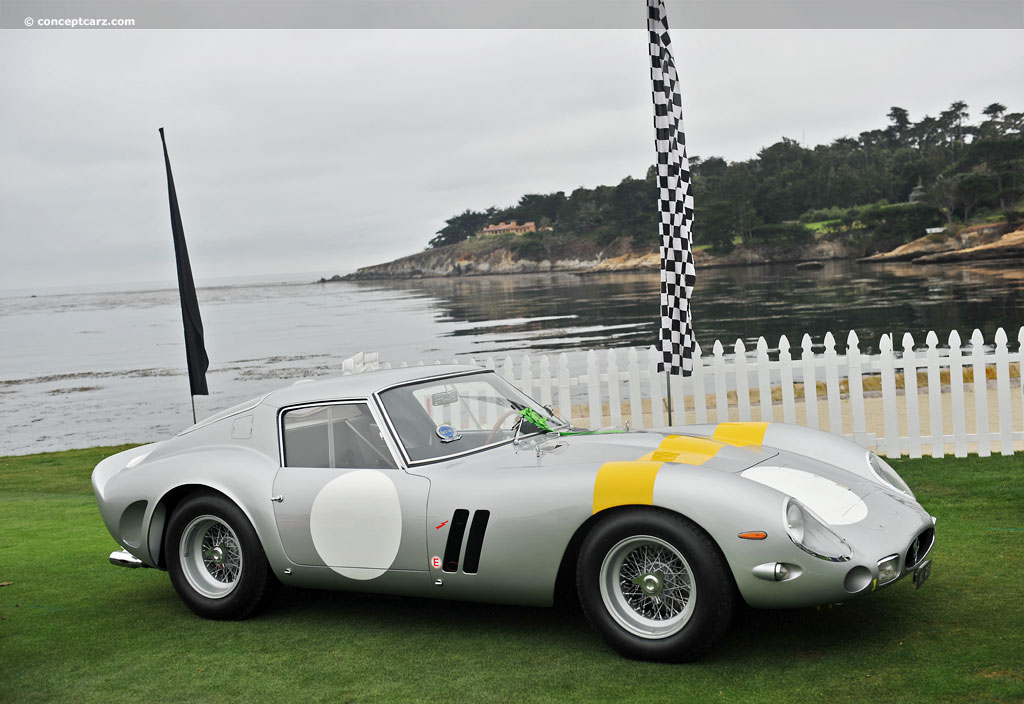
Berlinetta
Chassis #: 4153GT
View info and history
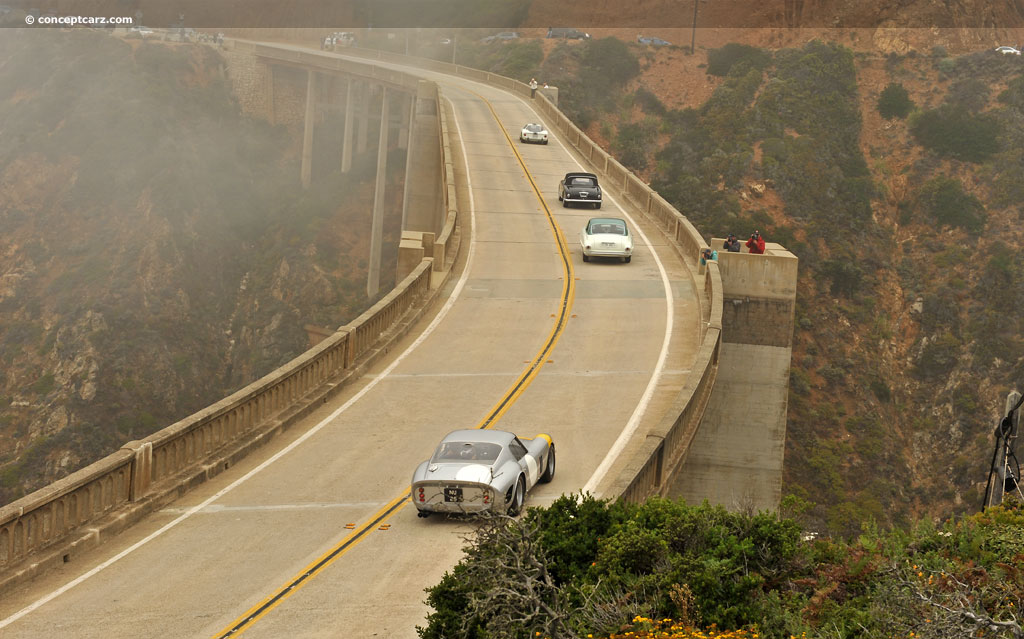
Berlinetta
Chassis #: 4153GT
View info and history
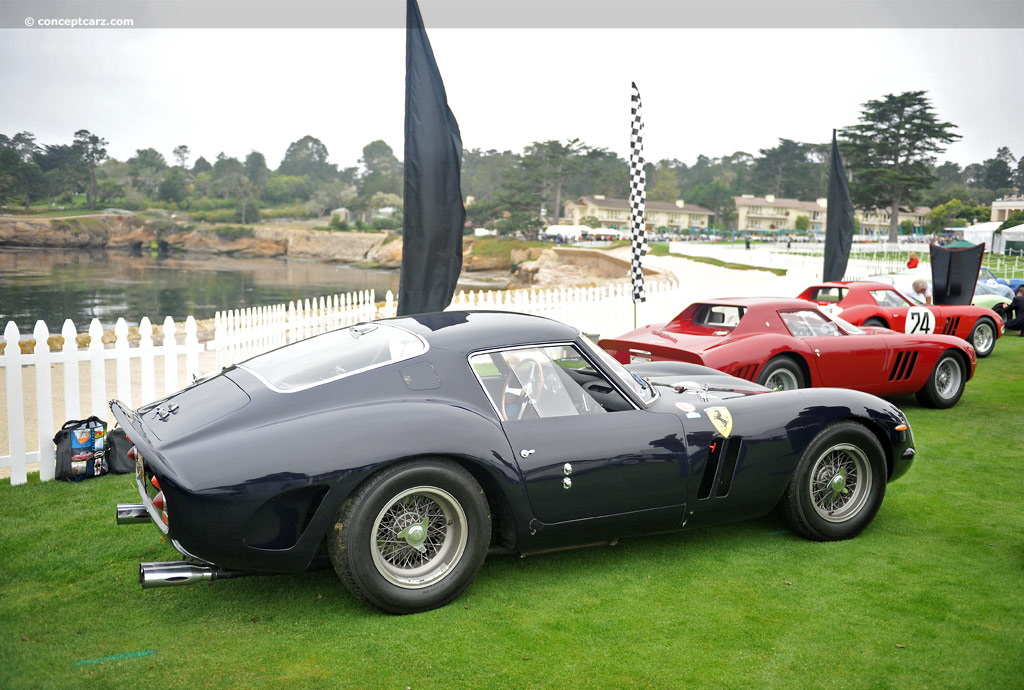
Berlinetta
Chassis #: 4219GT
View info and history

Berlinetta
Chassis #: 4293 GT
View info and history
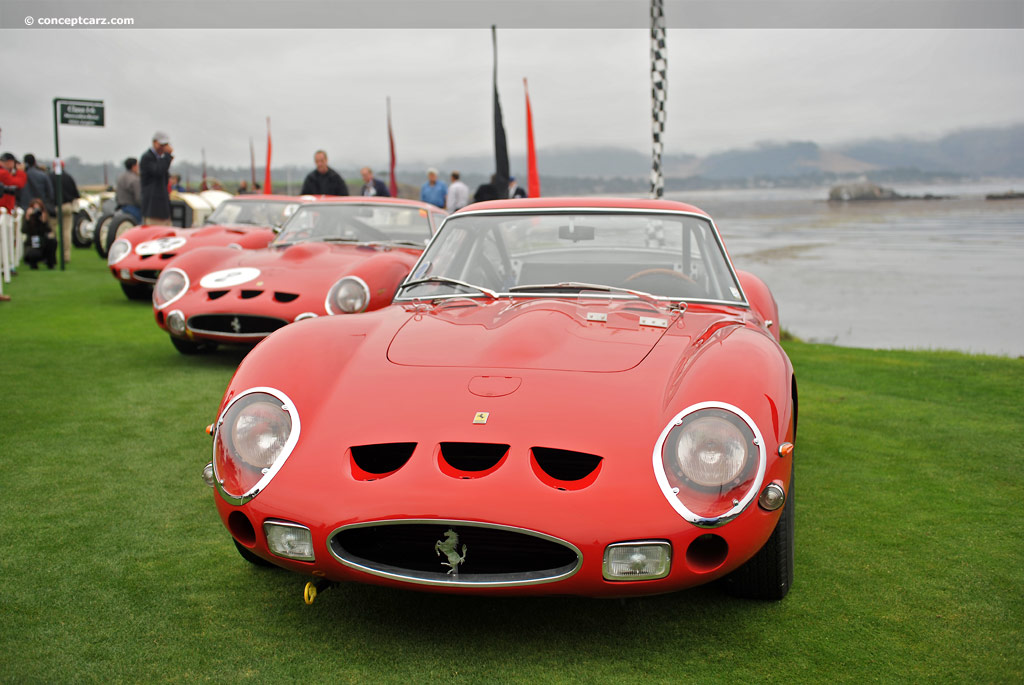
Berlinetta
Chassis #: 4757GT
View info and history
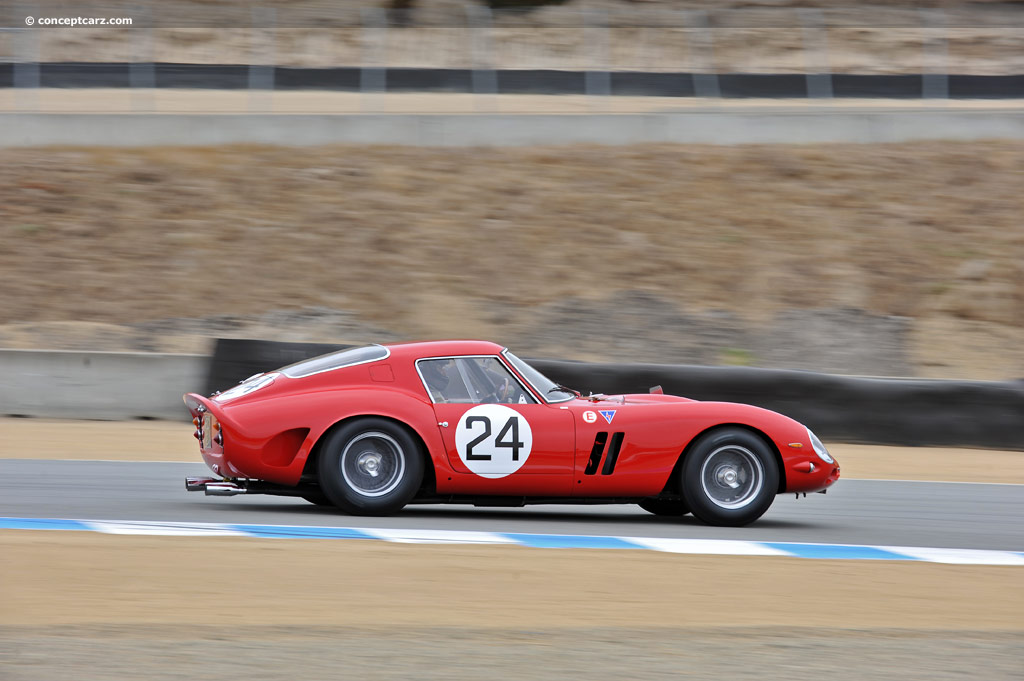
Berlinetta
Chassis #: 4293 GT
View info and history
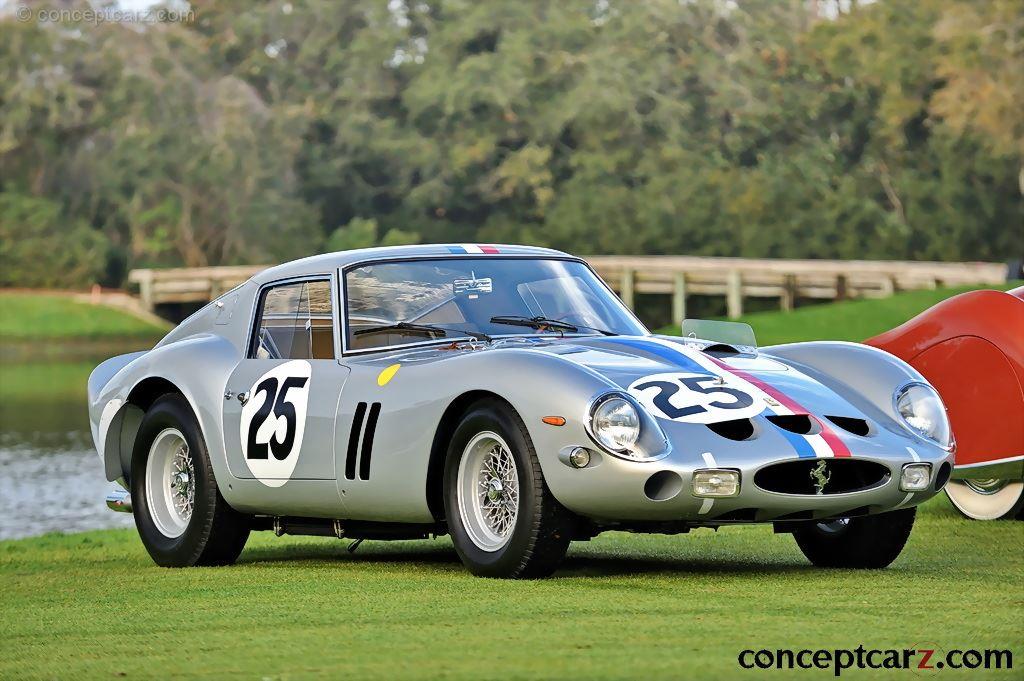
Berlinetta
Chassis #: 4153GT
View info and history
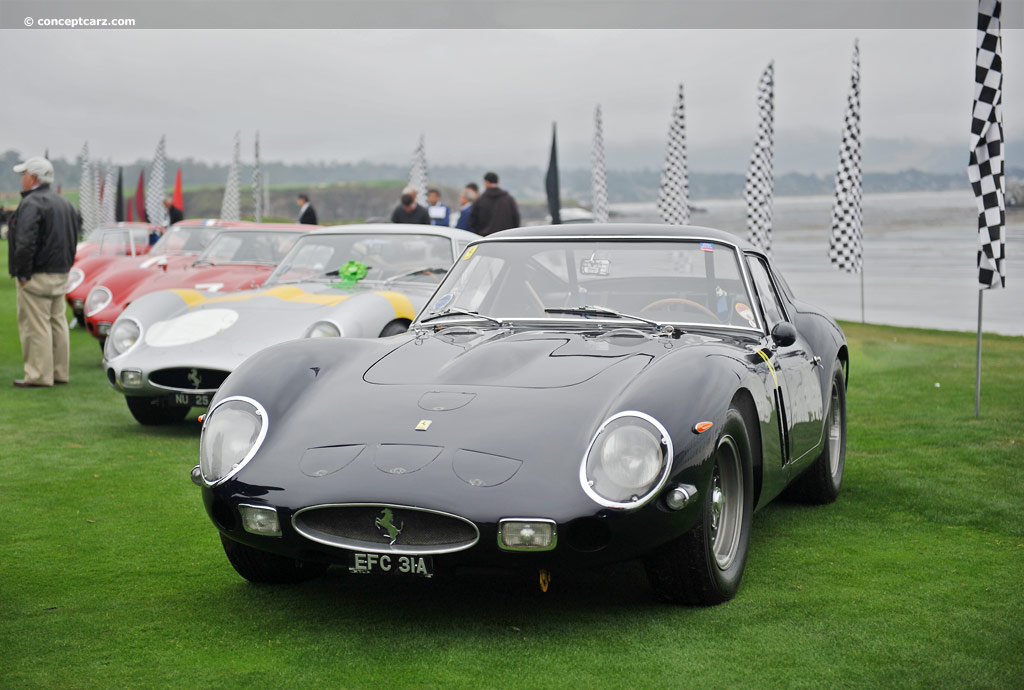
Berlinetta
Chassis #: 4219GT
View info and history
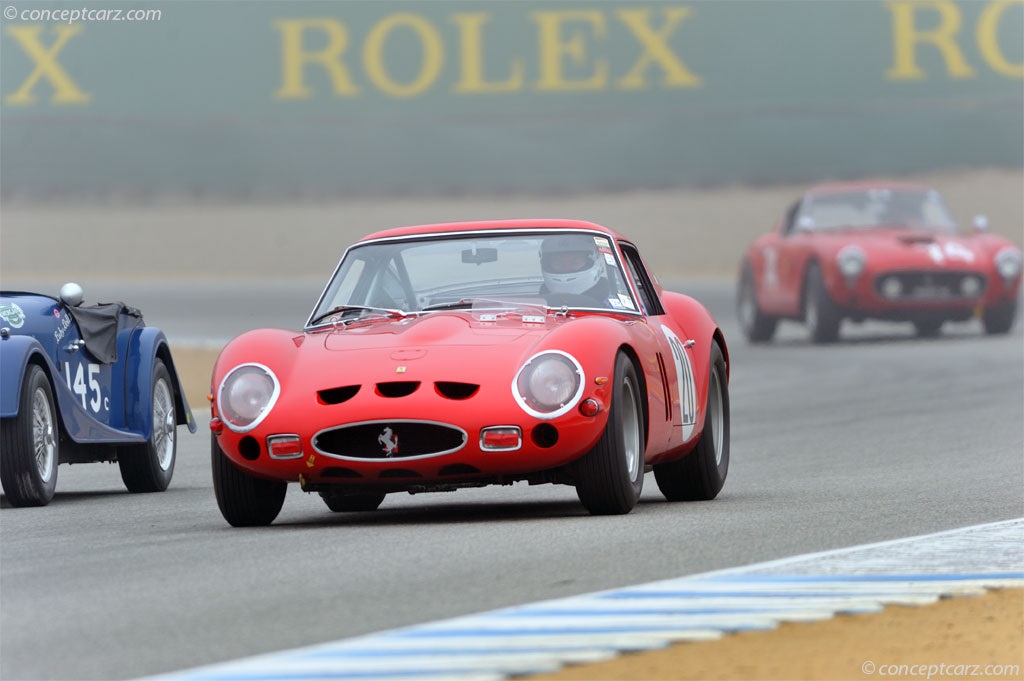
Berlinetta
Chassis #: 4757GT
View info and history
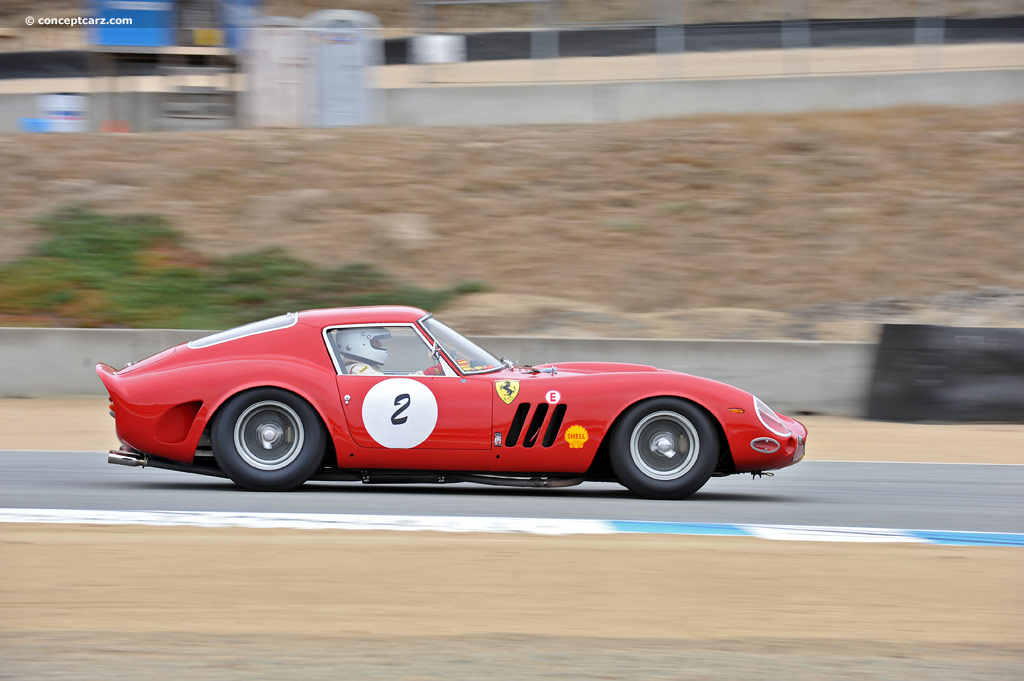
Berlinetta
Chassis #: 4561SA
View info and history
The early 1960s brought numerous changes to the racing community and development followed at a feverous pace. For Ferrari, things became even more complicated with the 'Great Walkout' in 1961, when sales manager Girolamo Gardini, together with manager Romolo Tavoni, chief engineer Carlo Chiti, sports car development chief Giotto Bizzarrini and other key figures in the company left Ferrari to found the rival car manufacturer and racing team Automobili Turismo e Sport (ATS). The mutiny by Ferrari's best engineers is attributed to Enzo's aggressive management style, and percolated to the boiling point with his wife's (Laura Garello) involvement in the company. Gardini threatened Enzo with leaving the company if Laura wasn't removed from company affairs. Laura would remain but Gardini was fired. Five other key personnel sided with Gardini and left the company in October 1961. The walkout occurred during the development of a new 250-based model, and the project's future was in jeopardy due to the loss of many key executives and engineers. Tragedy
Another struggle the company was facing was its path that led to its championship involving numerous fatalities. The Scuderia had won the World Championship of Drivers and the International Cup for F1 Manufacturer's titles in 1961, but these triumphs were overshadowed by Wolfgang von Trips' tragic death at Monza, which had also claimed the lives of fifteen spectators. In 1957, Ferrari Grand Prix driver Eugenio Castellotti was killed at the Modena Autodromo circuit, and Fon de Portago perished a month later at the last Mille Miglia race (killing several spectators in the process). Luigi Musso was killed at the French Grand Prix in Reims in 1958, and Peter Collins at the Nurburgring a few weeks later. The loss of life and the loss of talent in the walkout were a 'one-two' blow for Ferrari, leaving them 'on the ropes' as they attempt to cope with the poor publicity that followed. Ferrari's small family of employees had the monumental responsibility of keeping Il Commendatore at the pinnacle of motorsport competition.
The Ferrari GTO
As many in the motorsport community were switching to mid-engine configuration, the Ferrari 250 GTO remains one of the last front-engined cars to remain competitive at the top level of sports car racing. The road-going Ferrari 250 GTO would win the over 2,000cc class of the FIA's International Championship for GT Manufacturers in 1962, 1963, and 1964, along with continuing the company's nine-year dominance at the Tour de France Automobile with victories in 1963 and 1964. Chief engineer Giotto Bizzarrini is credited with the development and design of the 250 GTO, and following the mass exodus of Ferrari employees, further development was entrusted to new engineer Mauro Forghieri, who worked with Scaglietti to continue the development of the body. Forghieri had excepted an apprenticeship in the Ferrari engine department in the spring of 1960 and worked alongside many engineers including Vittorio Jano, Carlo Chiti and Luigi Bazzi. Shortly after his arrival, he was joined by Gian Paolo Dallara. After 'the great walkout,' Forghieri remained the only credentialed engineer on staff. Just 27 years of age at the time, he was appointed technical director for racing cars, a position he would remain in until 1984.Mechancial SpecificationMany of the mechanical specifications remained similar to its predecessors; its 250 GT SWB-based chassis received minor updates to its frame structure and geometry to make it stiffer, lower, and reduce its weight. The hand-welded oval steel elliptical section tube frame had a 94.5-inch wheelbase, an overall length of 170.3 inches, a height of 47.6 inches, and a width of 63 inches. The suspension was comprised of an A-arm setup at the front with a live axle in the back with Watt's linkage, semi-elliptic leaf springs, and Koni shock absorbers. The Borrani wire wheels concealed Dunlop disc brakes and the steering was via a ZF worm-and-peg setup. With lightweight aluminum coachwork and alloy engine, the 250 GTO had an overall weight of approximately 2,300 lbs (1,050 Kilo).Engine SpecificationThe race-proven Tipo 168/62 Comp 2,953cc (3.0 L) (2.9-inch bore / 2.3-inch stroke) engine powering the previous 250 Testa Rossa to victory at Le Mans was used to power the 250 GTO. The all-alloy, 60-degree, SOHC unit received six 38DCN Weber carburetors, dry sump lubrication, and a two-valve per cylinder valvetrain. With 9.7:1 compression, it developed 296 horsepower (300 PS) at 7,500 RPM and 217 lb-ft (294 Nm) of torque at 5,500 RPM. It was paired with a new 5-speed unit with Porsche-type synchromesh and a dry, single-plate clutch. Body DesignAerodynamic efficiency and lightweight construction were paramount, with wind tunnel testing at Pisa University (along with road and track testing) perfecting its elegant flowing shape. The long, low nose contained a small radiator inlet resting below air intakes with removable covers. High-speed characteristics and stability were improved by the underside of the car being covered by a belly pan, an underneath spoiler formed by the fuel tank cover, and the rear spoiler on the 'Kamm' shaped tail. The early prototypes were bodied in-house by Ferrari or by Pininfarina, with subsequent examples created by Scaglietti. Most examples received bright red 'Rosso Cina' exterior finishes, but a variety of colors were available.InteriorsAlthough the 250 GTO was a road-going vehicle, the interiors were minimalistic, with the seats being covered in cloth upholstery and ventilation via exterior air inlets. There was no carpeting or headliner and the exposed metal gate would become a Ferrari tradition going forward. FIA Group 3 Grand Touring Car HomologationThe 1962 FIA regulations required at least one hundred examples of a car to be constructed in order to be homologated for Group 3 Grand Touring Car racing. Falling far short of that figure, as less than 40 examples were ultimately built, the Ferrari 250 GTO fell under the homologation umbrella of the 250 GT Berlinetta SWB model. FIA rules allowed changes to the engine, transmission, suspension, and body. The Ferrari 250 GTO's Competition PedigreeAmerican Phil Hill and Belgian Olivier Gendebien drove the 250 GTO to a second overall finish (behind the 250 Testa Rossa competing in the prototype class) at its racing debut in 1962 at the 12 Hours of Sebring (the second round of the championship). It would win its class in each round of the world championship that followed, including a 1-2-3 class finish at Le Mans. Earning the maximum of 45 points, the 250 GTO easily won the season championship for Ferrari. The 250 GTO faced stronger competition during the 1963 season, but would remain at the top of its class and would earn another class victory at Le Mans and an outright victory in the Tour de France.Wearing so-called 'Series II' bodywork, the GTO saw some success during the 1964 season, by both privateers and the factory teams. Among the accolades was an overall victory at Daytona in 1964 by NART drivers Phil Hill and Pedro Rodriguez.Continued Development, Modifications, and VariantsSeries IThirty-three examples were built with 1962/63 bodywork. Four examples were later updated to Series II designs. GTO 64 Series II
What is commonly referred to as the 'GTO 64' or 'Series II' wore updated styling by Mauro Forghieri and Mike Parkes. They redesigned the 250 GTO's bodywork with many of the 250 LM's aerodynamic features in hopes of enhancing the GTO's competitiveness for the 1964 season. The 250 LM had a mid-engine, rear-wheel drive and was not approved by FIA to race in the GT class during the 1964 season. Minor modifications were made to the chassis, suspension, engine, gearbox and interior. 330 GTOsThree examples of the 330 GTO were built using the 250 GTO body paired with the 400 Superamerica 4.0-liter engine. Due to the larger engine, these cars received a larger bonnet bulge. Of the three cars, two examples were raced in period with a highlight being a second overall finish (and first in class) in the Nürburgring 1000 km.330 LMB (Le Mans Berlinetta) The 330 LMB used a modified 250 GT Lusso chassis and body and a 4.0-liter engine. Four examples were built in 1963, with the first example introduced in March alongside the mid-engined 250 P. Both were essentially developments of the 250 GTO with similarly styled front ends along with traditional Ferrari design cues. The 250 LMB was slightly longer than the 250 Lusso on which it was based, and had raised plates on the top of the rear fenders to help clear the rear tires. Among the accolades achieved was a fifth place finish at Le Mans in 1963 with drivers Jack Sears and Mike Salmon. The Legacy of the 250 GTOThe Ferrari 250 GTO was the end of an era for Ferrari's racing program as it was the conclusion of their 3-liter Colombo-design V12 Series in front-engine configuration. It kept the company at the top of the podium as they transitioned to new engineering personnel, and as they negotiated the new mid-engined style of cars. Their competition prowess and undeniable elegance have made them one of the most valuable cars in modern times, with recent sales reaching $70 million.
by Daniel Vaughan | Jan 2023
Related Reading : Ferrari 250 GTO History
The Ferrari 250 GTO was produced from 1962 through 1964 with 36 examples created during that time including 33 cars with the 1962 and 1963 Series I bodywork and three with 1964 (Series II) bodywork similar to the Ferrari 250 LM. Four of the Series I cars were later updated in 1964 with Series II bodies. The 250 GTO is a car of beauty, performance, and mystery. Much is known about the car, but much....
Continue Reading >>
Continue Reading >>
Related Reading : Ferrari 250 GT History
Production of the 250 Series began in 1954 and continued on through the early part of the 1960s. There were numerous variations of the 250 and would ultimately become Ferraris most successful line of vehicles to date. The 250 is also recognized as the first Ferrari to ever receive disc brakes. This did not take place until the end of the 1950s. Also, the 250 was the first four-seater. Ferraris....
Continue Reading >>
Continue Reading >>
- 1963 Ferrari 250 GTO Menu
- Article
- Image gallery
- Specifications
- Profiles
Ferrari
Similar Automakers
Similarly Sized Vehicles
from 1963
1963 Ferrari 250 GTO Vehicle Profiles
Recent Vehicle Additions
Performance and Specification Comparison
250 GTO Specification Comparison by Year
Year
Production
Wheelbase
Engine
Prices
Related Automotive News

The 55th anniversary of the 250 GTO
The rally marking the 55th anniversary of the Ferrari 250 GTO, one of the most iconic cars ever built both in terms of its design and for the wins it collected at some of the worlds most important tracks and races, concluded at the factory in Maranello...

Where it all started: Enzo's first production model heads up incomparable set of Maranello greats as Salon Privé celebrates Ferrari's 75th anniversary
Salon Privé Concours dElégance presented by Aviva assembles rare and hallowed Ferrari models, the like of which has never been seen before at a UK Concours
Notables include 1947 125 S (first production Ferrari ever built, on loan from factory),...

Ferrari 250 GTO leads collection of the world's rarest Ferraris at Concours of Elegance
Concours of Elegance to assemble finest selection of classic Ferraris ever seen in UK to celebrate marques 75th birthday.
Jaw dropping line-up up to include hallowed one-of-36 250 GTO, perhaps the worlds most sought-after car
Other stunning Fer...
RM SOTHEBY'S TO OFFER THE EX-FANGIO, EX-WORKS FERRARI 290 MM IN NEW YORK CITY...
RM SOTHEBYS TO OFFER THE EX-FANGIO, EX-WORKS FERRARI 290 MM IN NEW YORK CITY ONE OF THE WORLDS MOST HISTORIC AND VALUABLE SPORTS RACING CARS
RM Sothebys secures ex-works 1956 Ferrari 290 MM by Scaglietti, chassis 0626, for its Driven...

H&H CLASSICS TO SELL TWO MULTI-MILLION FERRARIS IN GENEROUS LEGACY TO THE RNLI
H%26H Classics to offer a 1960 Ferrari 250 GT SWB and 1967 Ferrari 275 GTB4 from the estate of the late Richard Colton, a pre-eminent British V12 Ferrari collector
Proceeds from the sale to benefit the Royal National Lifeboat Institution
1960 Ferra...
1958 12 Hours of Sebring: Collins and Hill Escort a Red-Head Home to Victory
In a matter of months Peter Collins would lay dying of wounds received in a violent crash at the Nurburgring during the German Grand Prix. While many would be holding their breaths and facing the cold-hard truth of another motor racing death, there would...
